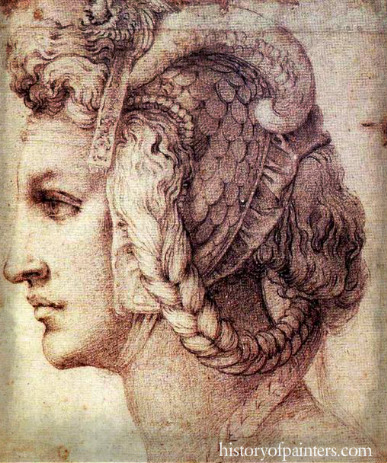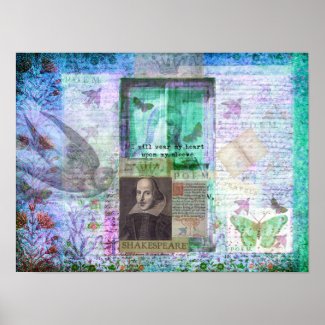Michelangelo di Lodovico Buonarroti Simoni
1475-1564
One of the Greatest Painters Of All Time
Italian Florentine, Renaissance Painter, Sculptor, Architect and Poet
Stylistically influenced by the following painters - Masaccio, Sandro Botticelli, Paolo Veneziano, Sano di Pietro and Classical Greek
Mental Health - He suffered from bipolar manic-depressive illness for most of his adult life and was known to binge drink for weeks at a time.
Cause of Death: Fever

Michelangelo Biography
In the story of Michelangelo's life the strength, often turning to bitterness, is not far to seek; a discordant note sounds throughout it which almost spoils the music. He "treats the Pope as the King of France himself would not dare to treat him"; he goes along the streets of Rome "like an executioner," Raffaelle says of him. Once he seems to have shut himself up with the intention of starving himself to death. As we come in reading his life on its harsh, untempered incidents, the thought again and again arises that he is one of those who incur the judgment of Dante, as having "willfully lived in sadness." Even his tenderness and pity are embittered by their strength. We know little of his youth, but all tends to make one believe in the vehemence of its passions. But his genius is in harmony with itself; and just as in the products of his art we find resources of sweetness within their exceeding strength. Michelangelo's art makes us spectators of this struggle; the struggle of a strong nature to adorn and attune itself; the struggle of a desolating passion, which yearns to be resigned and sweet and pensive.
Scandal in the Vatican
In the year 1545 Pietro Aretino, the Venetian author, wrote a strange letter to Michelangelo. As a Christian he disapproved of the freedom which the master had taken in his treatment of the Last Judgment. It was a scandal that such a work should be daily seen in the greatest temple of Christianity, upon the chief alter of Jesus, and the holiest chapel in the world, by the Pope himself. Pietro felt that Michelangelo committed blasphemy in representing the Heavenly Father as Jupiter and the saints as ancient heroes. He pressed the Church to imprison Michelangelo for taking such liberties with holy matters. The Pope refused.
About the Renaissance
According to historian John C. Van Dyke "The word "Renaissance" has a broader meaning than its strict etymology would imply. It was a "new birth," but something more than the revival of Greek learning and the study of nature entered into it. It was the grand consummation of Italian intelligence in many departments—the arrival at maturity of the Christian trained mind tempered by the philosophy of Greece, and the knowledge of the actual world. Fully aroused at last, the Italian intellect became inquisitive, inventive, scientific, skeptical—yes, treacherous, immoral, polluted. It questioned all things, doubted where it pleased, saturated itself with crime, corruption, and sensuality, yet bowed at the shrine of the beautiful and knelt at the altar of Christianity. It is an illustration of the contradictions that may exist when the intellectual, the religious, and the moral are brought together, with the intellectual in predominance."

Shakespeare whimsical LOVE quote Poster by shakespearequotes
Browse through more Posters, Art & Prints at Zazzle.com
Require more information and facts about Michelangelo's biography and other great Renaissance painters ? Poke around every nook and cranny of the known universe for information this subject. Search Here
Do you know something we don't? If you have comment or would like to share an insight regarding Art History, please submit your comment to the editor, via e-mail and if possible site the source. Thank you!
© HistoryofPainters.com If you like this page and wish to share it, you are welcome to link to it, with our thanks.
| links | book store | top 50 painters | art supplies | illuminated manuscripts |
| site map | medieval | artist quotations | iconography | 100 greatest paintings |